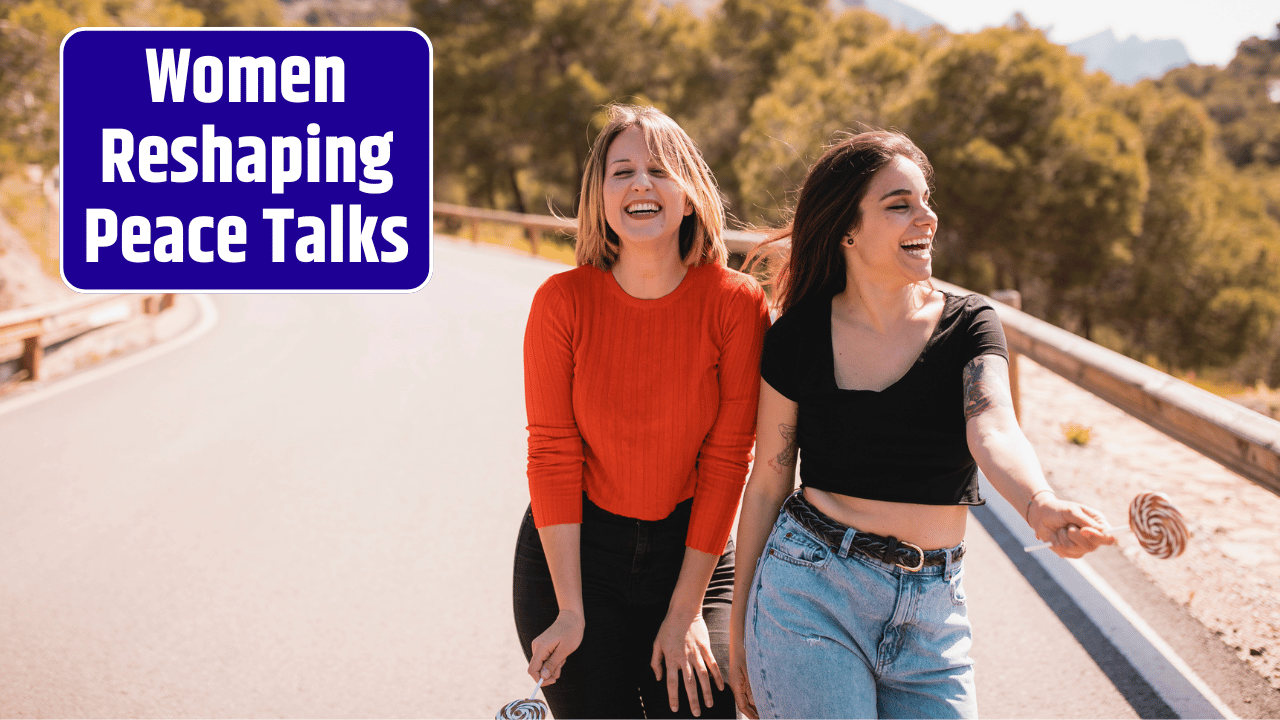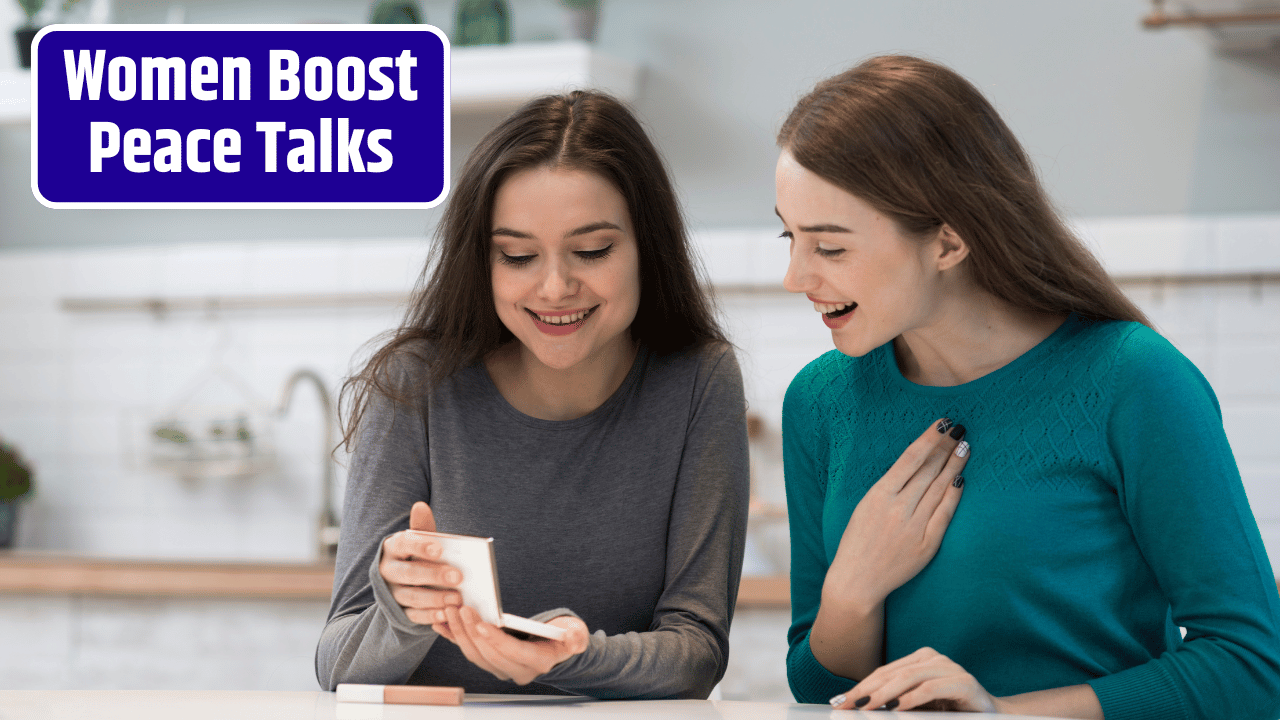Let’s be honest—most peace talks have looked the same for decades: a big wooden table, a few flags, maybe a translator in the corner, and a long line of men in dark suits arguing over borders and power.
But zoom in a little closer, and the picture is changing.
Slowly, stubbornly, women are claiming their seat at that table—not as silent observers or symbolic gestures, but as negotiators, mediators, and architects of lasting peace. And the difference they make? It’s not just symbolic. It’s strategic. Transformational. Long overdue.
Table of Contents
From Sidelined to Center Stage
Back in 2000, the UN passed Resolution 1325, promising to involve women in all aspects of peace and security. Nice idea. But for years, it mostly gathered dust.
Fast forward to now—and while we’re not in a utopia, there’s real movement.
In 2024 alone:
- 13 peace processes included women as official negotiators
- 5 countries introduced mandatory gender quotas for peace delegations
- $450 million was earmarked for women-led conflict resolution under new multilateral funds
And the impact? Measurable.
Peace talks that include women are 64% less likely to fail within the first 15 years.
— UN Women & PRIO joint study, 2024
What Women Bring to the Table (That’s Often Missing)
Spoiler alert: women aren’t just showing up to talk about “women’s issues.”
They’re flipping the script. Here’s what typically shifts when women are fully involved in negotiations:
| With Women Involved | Without Women |
|---|---|
| Focus on reconciliation, not just power-sharing | Focus on elite deal-making |
| Inclusion of civil society, youth, and minority voices | Exclusion of grassroots concerns |
| Prioritization of healthcare, education, and justice | Infrastructure and security dominate |
| Provisions for gender-based violence and trauma | Often ignored or delayed |
In short? The peace becomes about people—not just politics.
Real Women, Real Impact
Let’s ditch the theory for a minute and talk about what this looks like on the ground:
🇨🇴 Colombia
In the 2016 peace talks with FARC, women were at the table—and their voices helped shape historic provisions on:
- Sexual violence
- Indigenous land rights
- Rural women’s access to justice
Without them, those clauses wouldn’t have made it past the first draft.
🇸🇩 Sudan
Amid the 2023 civil conflict, women-led coalitions pushed for community-based ceasefires and access corridors for aid. In some regions, they succeeded where formal diplomacy stalled.
🇵🇭 The Philippines
The Bangsamoro peace process saw women from Mindanao communities act as mediators—ensuring religious and cultural sensitivities were honored. The result? A deal that actually held.
And in each case, these weren’t token appointments. They were driving forces behind durable, community-rooted peace.
Barriers Still Holding Women Back
Here’s the hard part: despite all the progress, women still face massive structural hurdles. Like:
| Barrier | Impact |
|---|---|
| Old-boy networks in diplomacy | Women excluded from informal power circles |
| Funding gaps | Less than 1% of peace funding goes to women-led orgs |
| Tokenism | Invited to talks but sidelined from decision-making |
| Security risks | Threats and violence against outspoken women leaders |
| Cultural norms | Seen as unfit to negotiate “serious” matters |
So yes, women are transforming peace talks—but they’re doing it against the odds. And usually, for a fraction of the pay and support.
How the Landscape Is (Finally) Changing
Despite the obstacles, we’re entering a new era—one where women’s leadership in peace and security is not a novelty, but a necessity.
What’s helping shift the tide?
- Regional Women Mediator Networks in Africa, the Middle East, and Europe
- Gender quotas in peace talks (now required by 8 countries)
- UN’s Women, Peace, and Security Agenda 2.0, launched in 2025 with stronger accountability tools
- Youth-led feminist peace movements, using tech and grassroots networks to mobilize change
This isn’t just a gender story—it’s a governance story. It’s about rethinking who gets to decide a nation’s future.
What Peace Looks Like With Women in Charge
Here’s what peace deals tend to include when women help shape them:
- Survivor-centered justice mechanisms
- Reparations for civilians (not just combatants)
- Commitments to social services and education
- Monitoring systems that actually work
- Rebuilding—not just of roads, but of trust
Women don’t negotiate for short-term silence. They negotiate for long-term healing.
And that’s what makes peace stick.
Yes, we need women in the room.
But we also need them heard.
We need them funded, protected, respected, and trusted—not just in post-conflict moments, but in prevention, in diplomacy, and in governance.
Because the more women lead peacebuilding, the more peace becomes something real—not just written.
FAQs
Why do peace talks still exclude women, despite UN mandates?
Because systems are still patriarchal, and enforcement is weak. Mandates help, but political will matters more.
Aren’t some women already involved in peace talks?
Yes, but often in limited or symbolic roles. Full inclusion means influence—not just attendance.
How can I support this shift?
Amplify women peacebuilders. Fund local initiatives. Push for government and international bodies to enforce gender quotas in negotiations.














